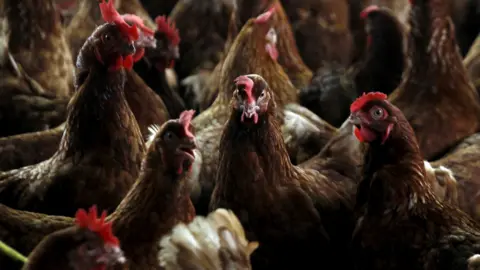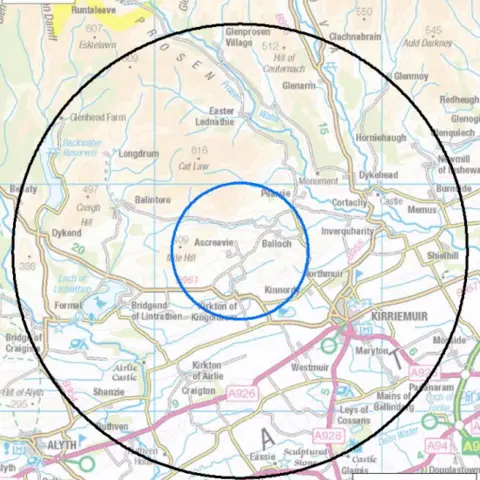Protection zone in place after bird flu outbreak
 PA Media
PA MediaA protection zone has been set up following an outbreak of bird flu in Angus.
Highly pathogenic avian influenza (HPAI), of the H5N1 strain, was reported at Over Ascreavie House, Kingoldrum, in the Kirriemuir area.
Chief veterinary officer Sheila Voas announced the report on Friday night.
A 3km (1.8 mile) protection zone and a 10km (6.2 mile) surveillance zone around the site have been put in place.
Restrictions have been implemented to stop the movement of poultry, carcasses, eggs, used poultry litter and manure to prevent any further spread of the disease.
A declaration published on the Scottish government's website, signed by Ms Voas, said the announcement was made official at 20:15.
It added: "The Chief Veterinary Officer (Scotland) has formed the opinion that highly pathogenic avian influenza exists, or has in the previous 56 days existed, on premises and has informed the Scottish ministers of that conclusion.
"This declaration has effect from the date and time it is made, until it is amended or revoked by further declaration."
 Scottish Government
Scottish GovernmentUnder the measures of the protection zone, anyone visiting premises with a 3km (1.8 mile) radius of Over Ascreavie House must keep a record of any visitors and whether they interacted with poultry.
They must also keep records of the number of birds on the site and the number of those falling ill.
Birds are ordered to be kept housed or isolated until the restrictions are lifted.
Meanwhile, the movement of domestic mammals in or out of the protection zone is banned if they have access to areas where poultry is kept.
Poultry or eggs from other locations being transported through either zone may be done so on a major highway or railway as long as no stop is made.
What is bird flu?
Bird flu is a disease caused by a virus that infects birds and sometimes other animals, such as foxes, seals and otters.
The dominant H5N1 strain emerged in China in the 1990s.
Scientists said the risk to humans was low when the strain began affecting cattle herds in the US last summer.
Transmission from birds to humans is rare and there has been no sustained human-to-human transmission.
